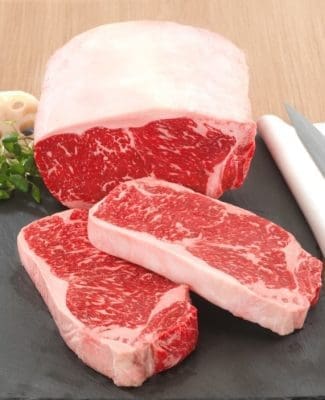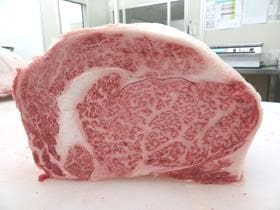Average Weight of a Beef Eye of Round Steak
US animal scientist Ken Olson's presentation on advancing mature cow weights at last week's Wagyu conference in Melbourne (see today's separate story) also highlighted the impact that the US beef carcase size trend is having further down the beef value chain.
In discussions with Beef Central, Prof Olson said the ever-increasing carcase weights in the US was creating enormous problems for US retail and food service end-users, in delivering steak cuts that were beyond reasonable portion sizes.
 Fed steer weights in the US approached an incredible 1400 pounds on average in 2019, or more than 636kg in our language. Compare this with Australian adult carcase weights which are forecast to average 311kg this year, a 9pc increase on the 283kg levels which were recorded in 2019 at the height of the drought. That's a rise 28kg/head in the space of three years. To put that comparison into context, however, those figures cover all Australian adult cattle slaughter – from yearlings and cull cows to steers and bulls, and both grass and grainfed. Industry estimates suggest Australian fed steers average around 380kg.
Fed steer weights in the US approached an incredible 1400 pounds on average in 2019, or more than 636kg in our language. Compare this with Australian adult carcase weights which are forecast to average 311kg this year, a 9pc increase on the 283kg levels which were recorded in 2019 at the height of the drought. That's a rise 28kg/head in the space of three years. To put that comparison into context, however, those figures cover all Australian adult cattle slaughter – from yearlings and cull cows to steers and bulls, and both grass and grainfed. Industry estimates suggest Australian fed steers average around 380kg.
Carcase and cut size was becoming a huge problem for steak cutting rooms and portion controllers in the US, who are trying to cut steaks to a weight – say 12 or 14 ounces, Prof Olson said.
"Rib eyes have gotten much bigger over the past ten years. If I want to cut a 12-ounce rib eye, it now has to be a really thin steak – which nobody in the trade wants – because it risks drying out in the cooking process."
"So the current carcase weight trend can be counter to a good eating experience – and it is becoming a huge challenge, for which the US industry has not yet found a solution," Prof Olson said.
"The two trends I am seeing in the US restaurant industry is thinner steaks, or traditionally-shaped cuts like striploins and rib-eyes literally being cut in half, leaving an unusual-looking piece of meat," he said.
"I recently went to a restaurant and got an odd round-looking steak, and I assumed it must have come from the tri-tip (a rump muscle) or somewhere. I told the waitress, 'this isn't a rib-eye,' and she told me it was, but that they had had to cut the steaks, leaving just the centre eye of the rib and removing everything else (spinalis) to get it to the required weight."
"Consumers get to know what each cut looks like, and to see something like this, leaves them wary about what's going on. And in my case, it changed the eating experience for me, because I was looking forward to the other rib-eye parts, like the spinalis."
"The industry hasn't yet come up with a solution. We all know it's going on, but we don't know how to stop it," Prof Olson said.

"In the US, we've made all this progress for genetic growth and the size we grow these cattle to, and the capacity for improved marbling. We can make great meat products, it's just that we've created this challenge for managing portion size in steak cuts. There's not any good solutions for it, yet, anyway."
He said the carcase weight problem had only been exacerbated by the huge backlog that had occurred in getting fed cattle to slaughter, caused by COVID sickness issues in meat plants and other issues, adding further weight to already very heavy cattle.
While Prof Olson's comments were directed at the broader beef industry, fortunately the Australian Wagyu sector is somewhat protected from the problem – despite the enormous carcase sizes being produced in F1 to Fullblood longfed Wagyu cattle in this country.
AWA's Matt McDonagh said that was because the Australian consumer market was something of an outlier in attempting to 'steak' portion Wagyu primals like rib-eye and sirloin. Many other customer countries using Australian Wagyu beef tended to break these muscles down into much smaller pieces, such as thin-sliced, diced or something else, rather than trying to serve a steak – removing some of the risk of extreme cut size.
Source: https://www.beefcentral.com/news/challenges-for-food-service-and-retail-customers-in-extreme-carcase-size/
0 Response to "Average Weight of a Beef Eye of Round Steak"
Post a Comment